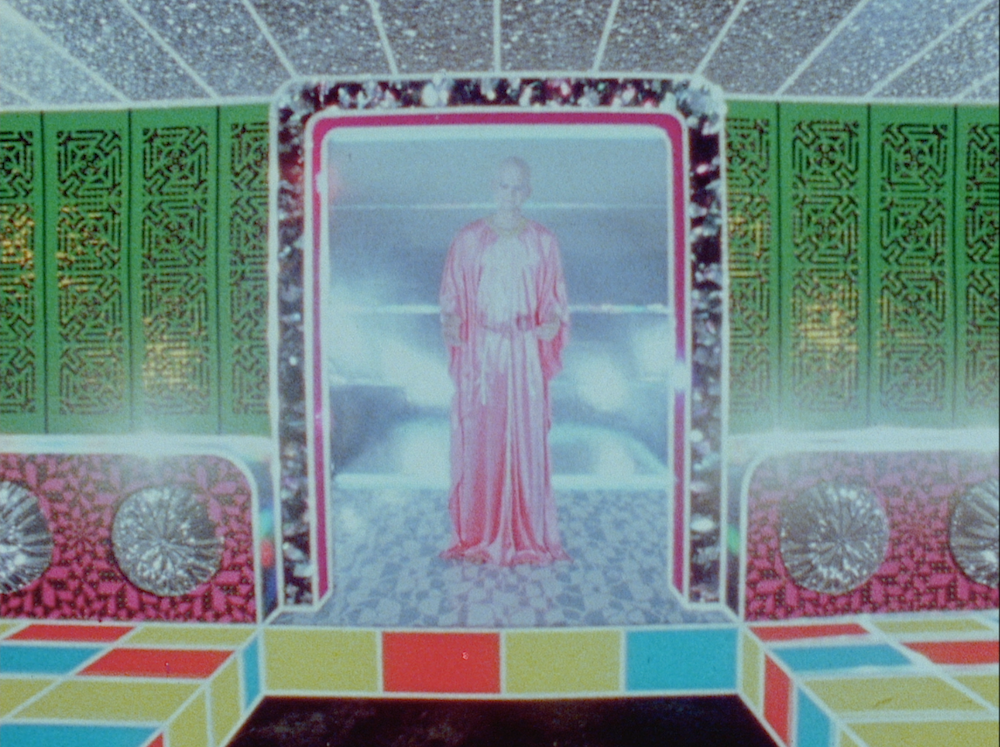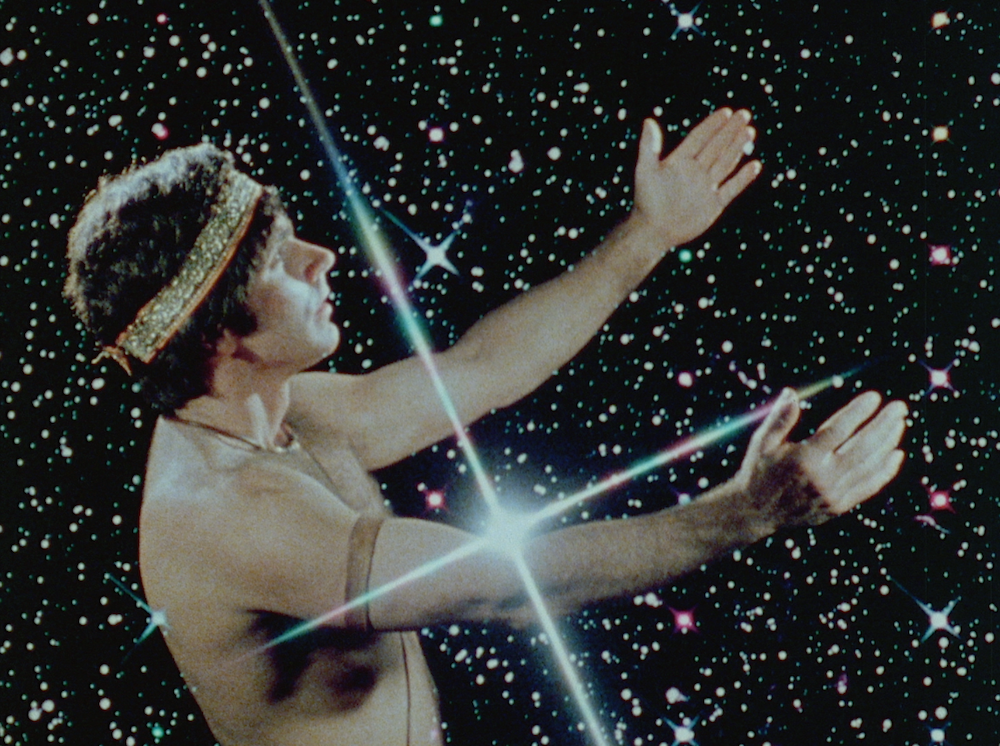It’s weird how the treasure trove of Outsider Video Art that was Public Access Television has only started to seep into mainstream consciousness as it has disappeared—the amateur programming itself, as well as its very context and infrastructure, rendered infinitely redundant by YouTube and TikTok. Tim & Eric Awesome Show Great Job!’s absorption of PA aesthetics (and actual participants like David Liebe Hart, James Quall, and Michael Q. Schmidt—all LA locals) is probably the most high-profile homage, but evidence suggests a deeper collective yearning for that time when the wilder frontiers of culture were less monetized and cluttered with mediocrity.
The latest salvo in this cultural rehabilitation is Jodie Wille’s Welcome Space Brothers, a feature-length documentary about the UNARIUS Academy of Science—a UFO/past life channeling NRM (New Religious Movement, though they deny any religiosity) founded in SoCal in 1954 that morphed into a legendary public access staple in the ’80s, when a perfect storm of synchronicities brought their mid-century spiritualism into the VHS era.
Technically, Wille’s film is more about the perfect storm than the Outsider Video Art angle. It isn’t that Wille insists on the documentary as an allegedly impersonal anthropological artifact, but that she understands UNARIUS as a less categorical artistic endeavor, encompassing writing and publishing, painting and sculpture, ritual, theater, relational aesthetics and social experiment. But it was their collectively-authored low-budget audiovisual fabulousness that set them apart from the UFO cult herd (I’m looking at you, L. Ron!). Wille has referred to UNARIUS as Warhol’s Factory “but with the objective of spiritual healing and transformation.” Nuff said!

The novelty of this revelation is relative. In the 80s UNARIUS was well-known among a certain subterranean stratum of society—those who followed the Church of Subgenius and The Weekly World News—artists, or those attuned to visual culture and its discontents. Post-punk I guess. Two of Unarius’ great strengths were its aforementioned visual presentation and its unironic absurdist relation to mainstream culture.
But where Subgenius and the WWN pointed out the absurdity of mainstream culture through satirical exaggeration, UNARIUS did so through idiosyncratic sincerity—particularly manifested by latter-day UNARIUS leader Ruth Norman AKA Uriel. “We were laughing at her,” says the disembodied voice of Ann Magnuson during WSB’s opening credits, “but I couldn’t stop watching. There was something else going on there.”
This is key to Wille’s approach. As with her previous film The Source Family (concerning the legendary Sunset Blvd psychedelic health food restaurant NRM), she remains steadfastly non-judgemental about the unconventional spiritual utopian communitarianism that is so often dismissed as delusional hippy bullshit. Where corporate stooge David Letterman saw Uriel as one zany kook among an endless stream of “talent,” Wille accepts her as a significant historical figure—a flawed but visionary creative force for good in the world, deserving of our respect.

This message is delivered in the course of Ruth Norman’s truly remarkable rags-to-riches (ish) story and the many not-so-dangerous-liasons that add a dash of intrigue to the proceedings, while effortlessly folding in short summaries of the public access phenomenon, the history of new age and UFO subcultures in CA, and the ET-obsessed popular culture moment into which UNARIUS’ films and videos emerged.
This makes for a well crafted, informative documentary, but what really sets WSB apart is the amazing visual material produced by the Unarians themselves. After Uriel’s 4th husband and UNARIUS cofounder Ernest Norman (AKA The Moderator) moved to the next level in 1971, the group grew more and more visually flamboyant. When they opened a storefront showroom in the beat-ass San Diego-adjacent community of El Cajon, the movement’s artistic side blossomed into a kaleidoscopic vision of billowing rayon, airbrushed beehive wigs, costume jewelry, Egyptiana, customized cadillacs, paintings, murals, costumes, props, and, ultimately, their remarkable films and videos.
WSB identifies two important figures from this era—director Dave Osborne, whose intricately layered DIY special effects in the UNARIUS feature film The Arrival are still mind-bogglingly awesome, and Stephan Yankoskie (AKA Space Brother Arieson), who directed later films, created ritual interactive installations, and designed Uriel’s over-the-top Cosmic Generator Dress, encrusted with sparkling lights and 3D models of the 33 planets of the interplanetary confederation.
Ultimately, though, it isn’t the individual artists, or figureheads like Uriel that made UNARIUS what it was. Since Uriel’s death in 1993, the group has soldiered on as a sort of democratic collective, keeping their teachings and vision available to the public. It’s a vision of healing, acceptance, peace, cooperation, and hope, expressed through an outpouring of unbridled creative energy. If that spells crazy, beam me up!
Welcome Space Brothers screens as part of the LA3C Festival
Sunday, November 12, 2023 at 4pm
Los Angeles Theatre
615 S. Broadway, Los Angeles


